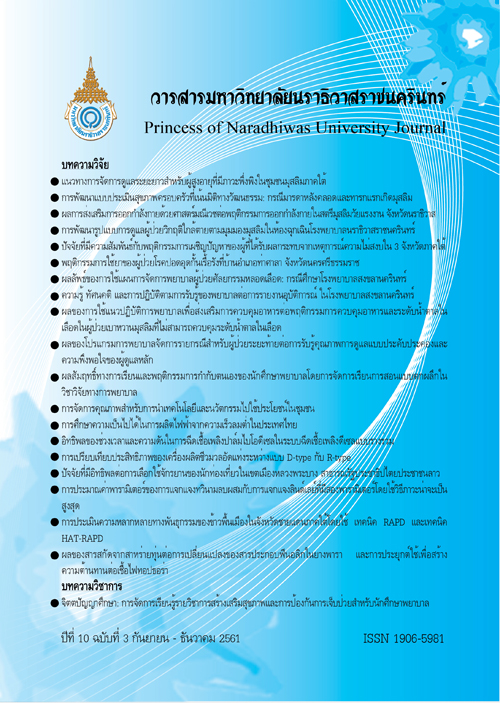Influence of Injection Energizing Durationand Injection Pressure for Palm Biodiesel in Common-rail Fuel Injection System
Keywords:
Injection rate, Commonrail injector, Fuel injection pressure, Injection durationAbstract
This research presents fuel injection rate measurement with high pressure diesel injection system
(Common Rail) at fuel injection pressure simulated real engine conditions. The investigation of relationship
between fuel injection rate for diesel and palm biodiesel was studied by Zeuch’s method. This work aims
to study influence of energizing duration and fuel injection pressure with results injection rate, energy
contents, average speed and Reynolds number.
The results showed that increase fuel injection timing results in increased fuel injection, but as the fuel injection pressure increases, the injection volume is greater than the fuel injection time. The lower
energy content of biodiesel due to lower fuel heating value and injection quantity. The average fuel
injection rate and the Reynolds number of palm biodiesel are less than those of diesel due to increased viscosity of palm biodiesel. The fuel flow resistance and consequently the effect of fuel dispersion decreases. The way to reduce the amount of biodiesel fuel has done by increasing the fuel injection pressure to reduce
the fuel injection resistance.
References
Benajes, J., Pastor, J. V., Payri, R., & Plazas, A. H. (2004). Analysis of the Influence of Diesel Nozzle Geometry
in the Injection Rate Characteristic. Journal of Fluids Engineering, 126(1), 63.
Boehman, A. L., Morris, D., Szybist, J., & Esen, E. (2004). The Impact of the Bulk Modulus of Diesel Fuels on Fuel Injection Timing. Energy & Fuels, 18(6), 1877–1882.
Denso Australia (2018). Common Rail System. Retrieved 22 May 2018, form http://www.denso.com.au/ Products/Automotive/Engine-Management/Common-Rail-System.
Desantes, J. M., Payri, R., Salvador, F. J., & Gimeno, J. (2003). Measurements of Spray Momentum for the
Study of Cavitation in Diesel Injection Nozzles. SAE Technical Paper 2003-01-0703.
Dernotte, J., Hespel, C., Foucher, F., Houillé, S., & Mounaïm-Rousselle, C. (2012). Influence of physical fuel
properties on the injection rate in a Diesel injector. Fuel, 96, 153–160.
Han, D., Duan, Y., Wang, C., Lin, H., & Huang, Z. (2014). Experimental study on injection characteristics of
fatty acid esters on a diesel engine common rail system. Fuel, 123, 19–25.
Ishikawa, S., Ohmori, Y., Fukushima, S., Suzuki, T., Takamura, A., &Kamimoto, T. (2000). Measurement of
Rate of Multiple-Injection in CDI Diesel Engines. SAE Technical Paper 2000-01-1257.
Jung, D., Wang, W. L., Knafl, A., Jacobs, T. J., Hu, S. J., & Assanis, D. N. (2008). Experimental investigation
of abrasive flow machining effects on injector nozzle geometries, engine performance, and emissions in a di diesel engine. International Journal of Automotive Technology, 9(1), 9–15.
Knefel, T. (2011). The evaluation of the characteristic injection times of a multiple fuel dose. Journal of
KONES, 18, 205–213.
Lee, K. T., & Ofori-Boateng, C. (2013). Environmental Sustainability Assessment of Biofuel Production from
Oil Palm Biomass. In K. T. Lee & C. Ofori-Boateng, Sustainability of Biofuel Production from Oil Palm Biomass (pp. 149–187). Singapore: Springer Singapore.
Moon, S., Tsujimura, T., Gao, Y., Park, S., Wang, J., Kurimoto, N., & Oguma, M. (2014). Biodiesel effects on
transient needle motion and near-exit flow characteristics of a high-pressure diesel injector. International Journal of Engine Research, 15(4), 504–518.
Pandey, R. K., Rehman, A., & Sarviya, R. M. (2012). Impact of alternative fuel properties on fuel spray
behavior and atomization. Renewable and Sustainable Energy Reviews, 16(3), 1762–1778.
Payri, F., Bermúdez, V., Payri, R., & Salvador, F. J. (2004). The influence of cavitation on the internal flow
and the spray characteristics in diesel injection nozzles. Fuel, 83(4–5), 419–431.
Payri, R., Garcia, J., Salvador, F., &Gimeno, J. (2005). Using spray momentum flux measurements to understand
the influence of diesel nozzle geometry on spray characteristics. Fuel, 84(5), 551–561.
Salvador, F. J., Gimeno, J., De la Morena, J., &Carreres, M. (2012). Using one-dimensional modeling to analyze the influence of the use of biodiesels on the dynamic behavior of solenoid-operated injectors in common rail systems: Results of the simulations and discussion. Energy Conversion and Management, 54(1), 122–132.
Seykens, X.L.J. Somers, L.M.T. & Baert, R.S.G. (2004). Modeling of commonrail fuel injection system and
influence of fluid property on injection process. Proceedings of the International Conference on Vehicles Alternative Fuel Systems & Environmental Protection, VAFSEP 2004, 6-9 July 2004, Dublin, Ireland.
Siano., D. (2010). Fuel injection. Sciyo, JanezaTrdine 9, Croatia.
Som, S., Longman, D. E., Ramírez, A. I., & Aggarwal, S. K. (2010). A comparison of injector flow and spray
characteristics of biodiesel with petrodiesel. Fuel, 89(12), 4014–4024.
Srichai, P., Charoenphonphanich, C., Karin, P., Tongroon, M., & Chollacoop, N. (2016). Injection Pressure
Characteristics of Palm Methyl Ester and Diesel in Solenoid Injector under Common-Rail System. SAE Technical Paper 2016-01-1729.
Srichai, P., Ewphun, P.-P., Charoenphonphanich, C., Karin, P., Tongroon, M., &Chollacoop, N. (2018). Injection
Characteristics of Palm Methyl Ester Blended with Diesel Using Zuech’s Chamber. International Journal of Automotive Technology, 19(3), 535–545.
Taşkiran, Ö. O., & Ergeneman, M. (2011). Experimental Study on Diesel Spray Characteristics and Autoignition
Process. Journal of Combustion, 2011, 1–20.
Thammnaomai. A. (2018). Bureau of biofuel development. Retrieved 22 May 2018, from https://www.mtec.
or.th/files/Biofuel_PPT_diesohol.pdf.
White, M. F. (2009). Fluid Mechanics. (7th ed.). USA: McGraw-Hill Companies, Inc.




